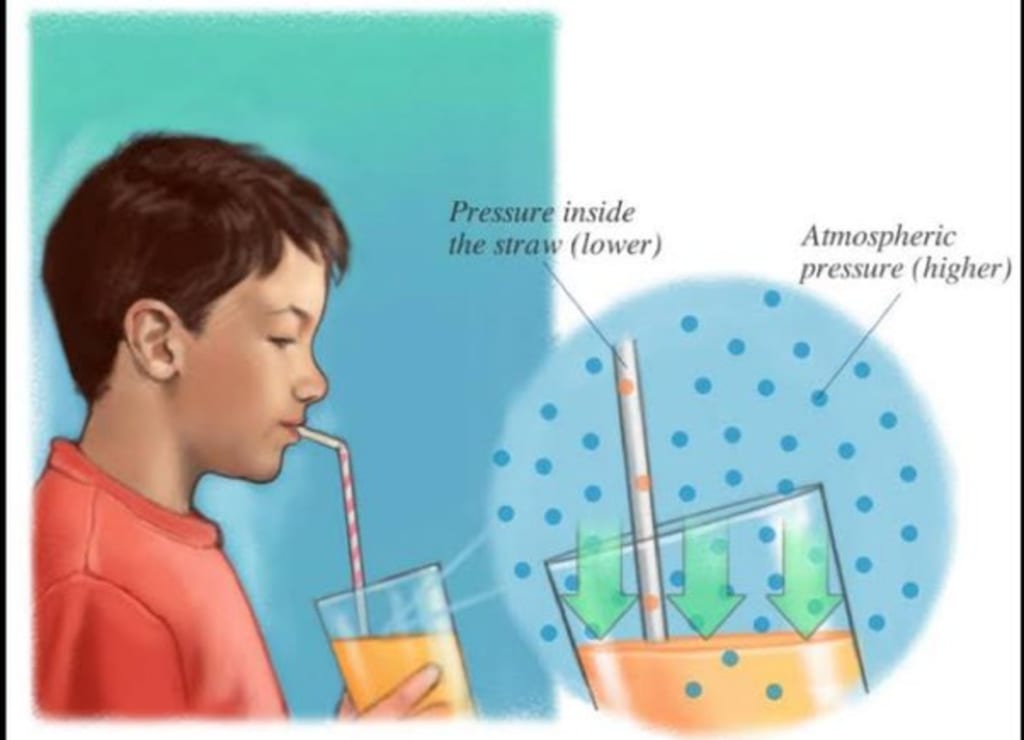Why A Drinking Straw Is Not Allowed In Space
Imagine yourself alone in space, performing a spacewalk to fix your space station's damage. Your pressurized suit suffers a rupture after being struck by some stray space debris and the air slowly starts to leak out. Before joining the extremely few individuals who have ever perished in space, you only have a little window of time to return inside. You realize you have gone too far and turn to your sole source of comfort, a flask of juice in your pocket that you can get to with a floating straw for your lips.

Now for the bad news: you cannot consume liquids with a straw in space. Let us explain as you perish, juiceless. You're not truly sucking up the liquid when you use a straw. You're sucking the air out of the straw, causing a vacuum or a drop in air pressure inside the straw. Outside of your drink, air pressure drives the liquid into the straw and up into your mouth.
As a result of the incredibly low pressure experienced in space, there is no effort made to propel the drink up the straw. A synthetic atmosphere maintained at atmospheric pressure can be found within the space station. Straws may still be used as usual under this pressure, although you might have to sip your beverage from a blob that is floating in the water.
You can no longer use straws to drink outside of the pressure of your spacecraft and suit. Even worse, the pressure would now be so low that gas bubbles would start to develop inside of you and the boiling point of the bodily fluids would drop below body temperature.
"For 9 to 11 seconds, some level of awareness will likely be preserved. Then, in quick succession, there will be widespread convulsions, followed by paralysis once more, according to NASA's Bioastronautics Data Book.
Water vapor will quickly develop in the soft tissues at this period, whereas venous blood does so considerably more slowly. Unless the body is constrained by a pressure suit, this development of water vapor will induce a dramatic enlargement of the body, maybe to double its usual capacity.
Gas and water vapor would slowly exit your airways as your blood stopped pumping, and the subsequent evaporation of moisture would cause your mouth and nose to somewhat freeze before the rest of you.
A drinking straw is a thin tube made of plastic (such as polypropylene and polystyrene) or another material that is used to move beverages from their containers to the drinker's lips. Many people mistakenly assume that when they drink anything, they are sucking it up; in reality, they are pushing it up. A straw functions because it generates a vacuum when the air is sucked out of it. As a result, there is less air pressure inside the straw. Liquid is driven into the straw, up its length, and into your mouth because the atmosphere is more pressurized on the exterior of the straw.
The pressure on the surface of the tea is the same all around when the straw is merely sitting in the glass, including the small amount of surface inside the straw. The pressure within the straw falls as you exhale air, which causes the increased surface pressure to push the tea through the straw and into your mouth. Because it is the atmosphere that is pushing, atmospheric pressure restricts how far water can go up a straw.
The pressure outside the straw, at sea level, would be sufficient to lift water to a total height of around 10.3 m if you created a perfect vacuum within the straw. A 10.3-m column of water has the same pressure as the gas molecules in our atmosphere: 101,325 N/m2, or 14.7 lb/in2 (psi). A water column of thirty feet high may be supported at sea level by the air pressure. This indicates that the water would not rise higher than thirty feet even if you could squeeze all the air out of a forty-foot straw. Therefore, you likely have more pressing concerns than "Can I use a straw?"
About the Creator
Najmoos Sakib
Welcome to my writing sanctuary
I'm an article writer who enjoys telling compelling stories, sharing knowledge, and starting significant dialogues. Join me as we dig into the enormous reaches of human experience and the artistry of words.
Enjoyed the story? Support the Creator.
Subscribe for free to receive all their stories in your feed. You could also pledge your support or give them a one-off tip, letting them know you appreciate their work.






Comments
There are no comments for this story
Be the first to respond and start the conversation.